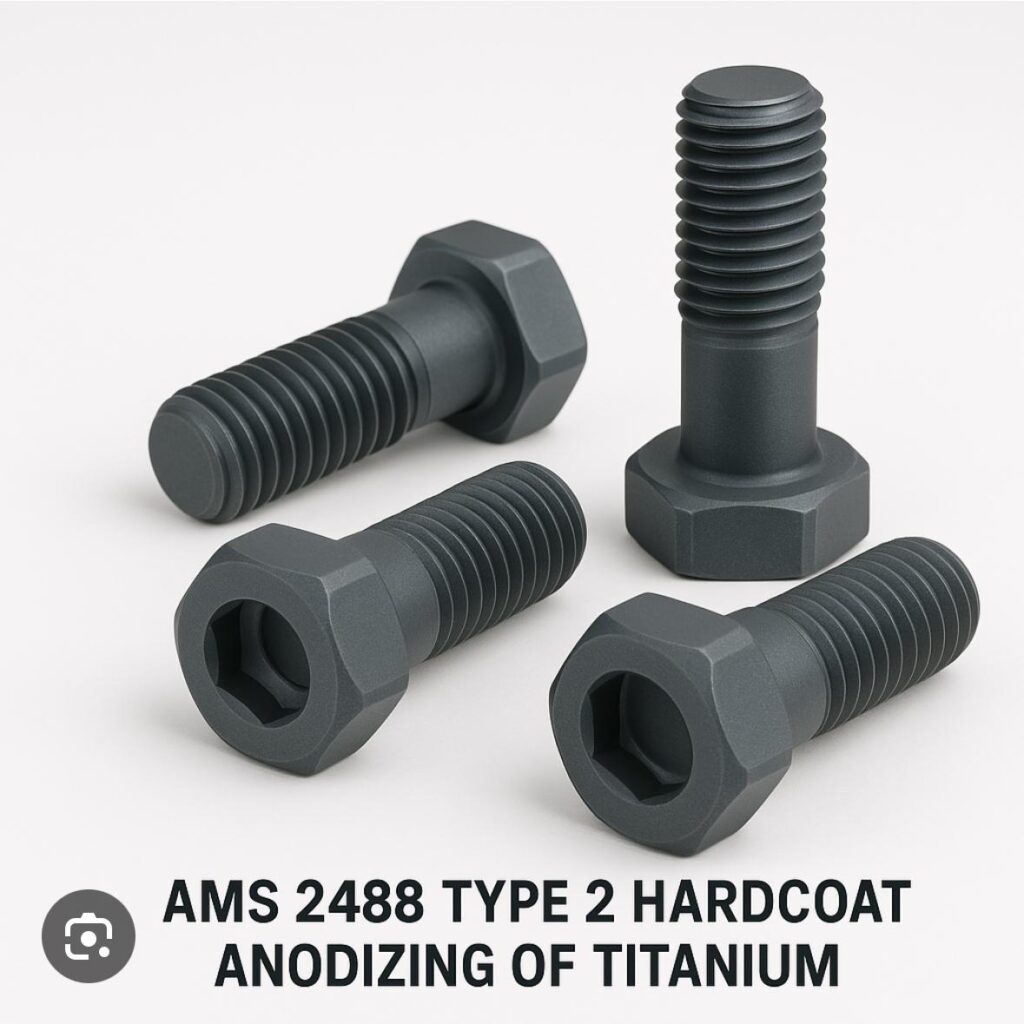Titanium 6-Aluminum with Type II anodize per AMS 2488 refers to a specific aerospace-grade titanium alloy that has been treated with a particular anodizing process. Here’s a detailed breakdown:
1. Titanium 6-Aluminum
This is shorthand for Titanium 6Al-4V (also written as Ti-6Al-4V), the most commonly used titanium alloy. It consists of:
- 90% Titanium
- 6% Aluminum
- 4% Vanadium
It is known for:
- High strength-to-weight ratio
- Excellent corrosion resistance
- Good fatigue and fracture resistance
Applications: Aerospace components, medical implants, marine hardware, and other high-performance environments.
2. Type II Anodize per AMS 2488
AMS 2488 is a specification from SAE (Society of Automotive Engineers) that defines the anodic treatment for titanium and titanium alloys. It includes three types:
- Type I: Thin film (non-chromic acid)
- Type II: Thicker film, non-chromic, for improved wear and corrosion resistance (this is what you’re asking about)
- Type III: Chromic acid anodize
Type II Anodize Features (per AMS 2488):
- Purpose: Enhances corrosion resistance and provides a base for bonding or paint.
- Appearance: Light blue-gray or iridescent; the color depends on alloy and thickness.
- Thickness: Typically around 1.3 to 2.5 microns (0.00005 to 0.0001 inches)
- Non-chromic: Environmentally friendly, does not use hexavalent chromium
Summary
Titanium 6-Aluminum with Type II anodize per AMS 2488 refers to a Ti-6Al-4V alloy that has undergone Type II anodizing according to the AMS 2488 specification, resulting in improved corrosion resistance, better bonding surface, and enhanced wear performance, typically used in aerospace, defense, and medical applications.



